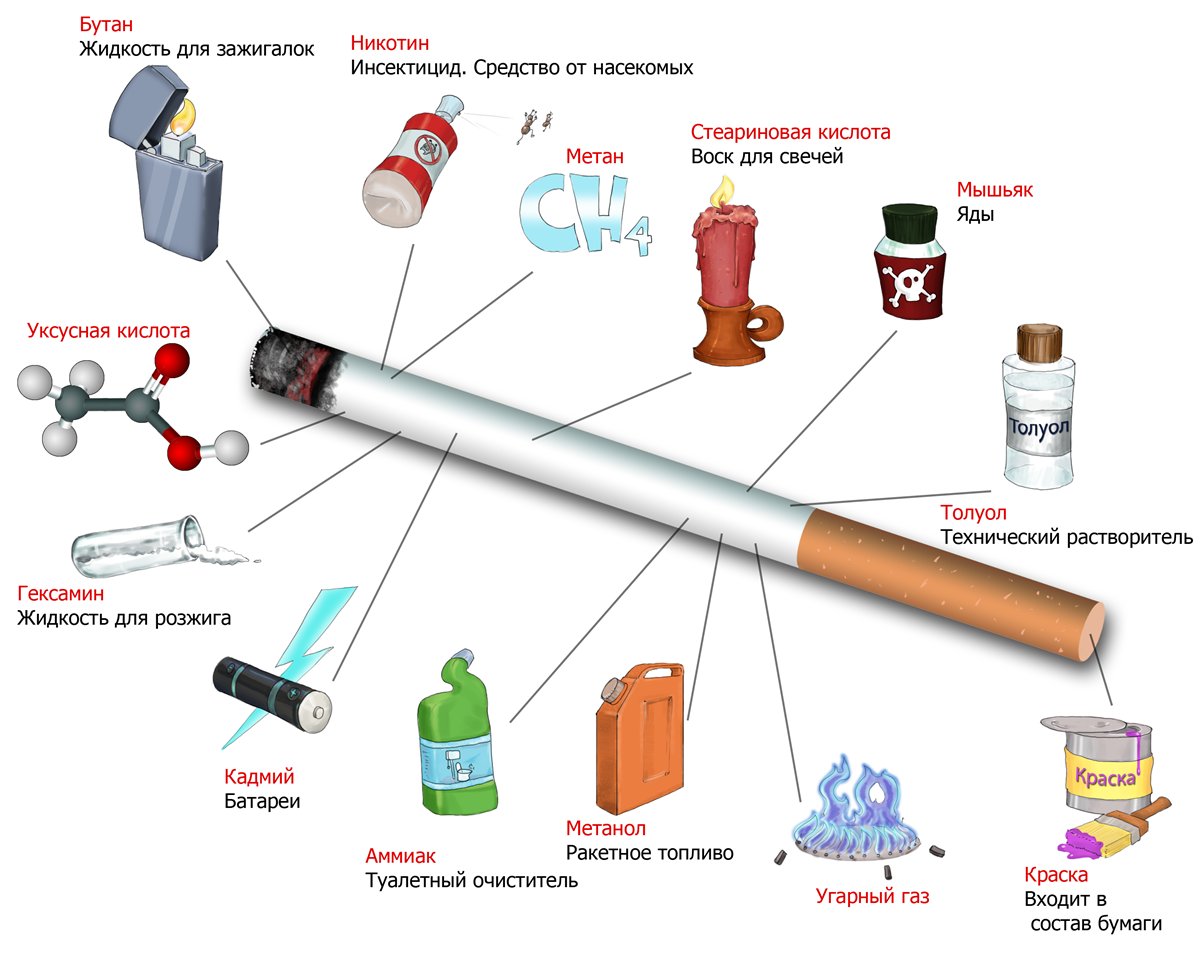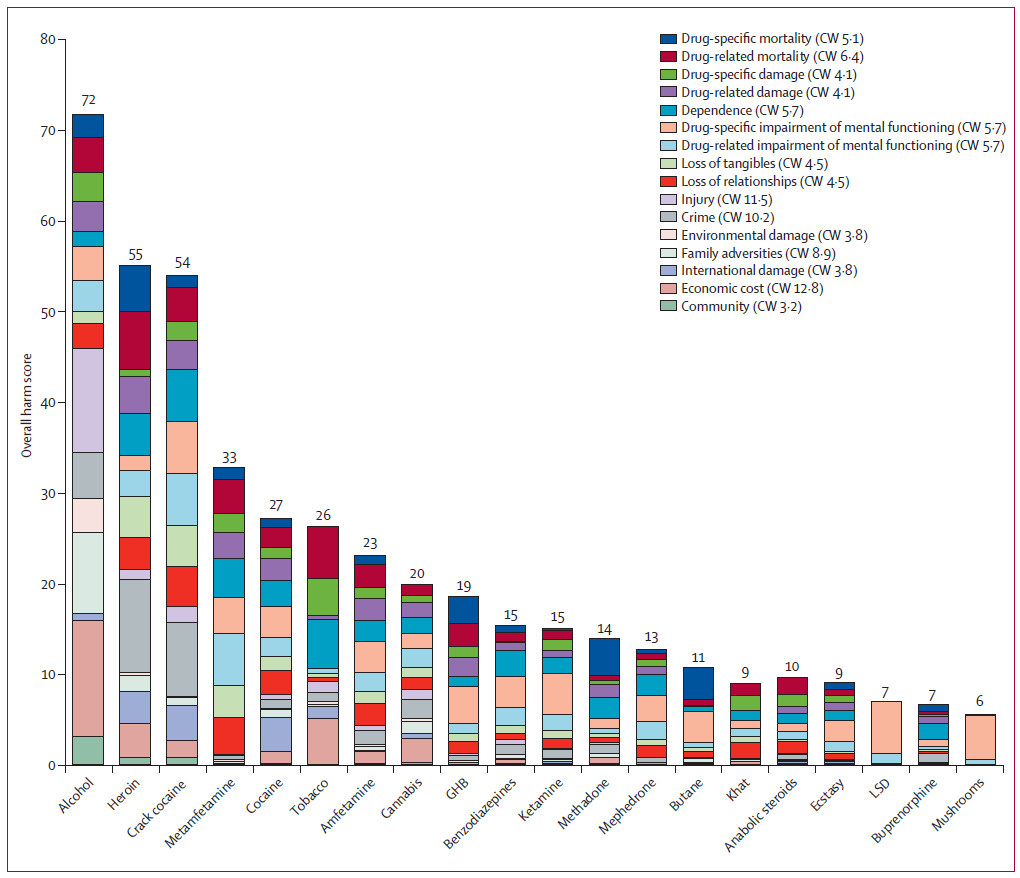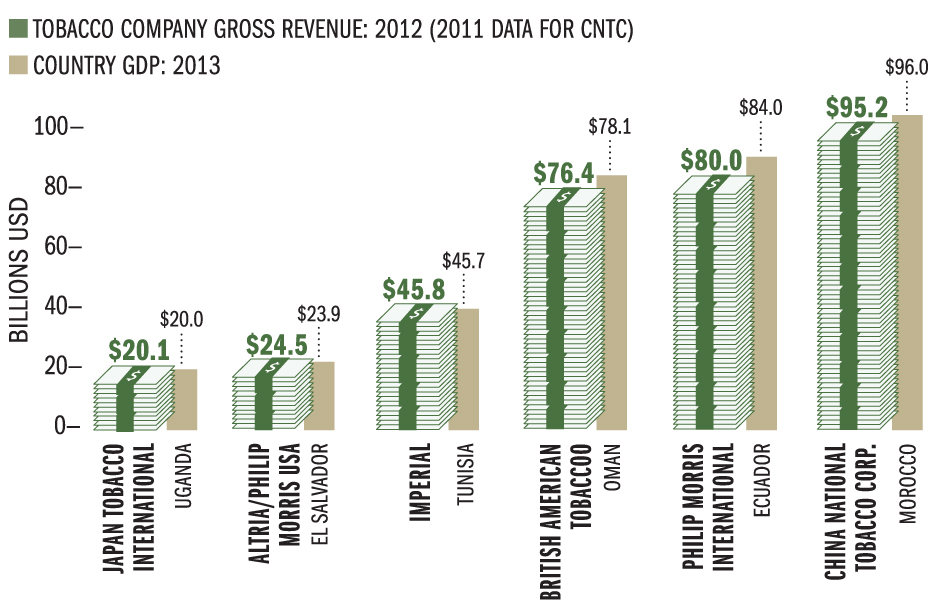Conspiracy theories. Tobacco lobby makes a profit from the slow suicide of millions of people

The article on the alcohol lobby talked about a powerful neurotoxin with a narcotic effect - alcohol, which is still sold in grocery stores next to bread and milk. On the streets, thousands of people walk in a state of serious drug intoxication and an altered state of consciousness. They commit murder, rape, beatings of people around (about 80% of especially grave crimes are committed under the influence of alcohol), become fathers and mothers of mentally retarded children. But all this does not cause much surprise in our society. It is like a tradition.
If you comply with the current classification requirements, alcohol would be classified as a Class A drug, along with heroin and cocaine. No other drug can compare with alcohol in terms of total harm, which consists of mortality, harm to health, level of dependence, destructive influence on a person’s mental abilities, economic damage, influence on crime, damage to a family, etc.

Source: The Lancet
Interestingly, there is another “authorized drug”, which in some respects is even more dangerous than alcohol. In particular, this substance causes a stronger dependence (after several uses). Directly from taking this drug, more people die than from drinking alcohol, and it causes even more damage to human health. This deadly substance is tobacco.
In fact, the damage to the body is so great and obvious that smoking tobacco can be considered a slow suicide .
Although euthanasia is prohibited in the Slavic countries, society accepts the slow suicide of millions of smokers, as well as accepts the use of alcohol, although many lesser drugs are strictly prohibited, and for their spread threatens a prison term of more than ten years.
If alcohol and tobacco were invented today, they probably would have been banned because of serious harm to the body and to society. But they belong to the so-called "legal drugs". It was them who were chosen by the state so that people could do their usual work - to influence the brain with the help of psychotropic drugs.
"Permitted Drugs"
Immediately it is necessary to make a reservation that, according to the strict definition of the World Health Organization, a “drug” is considered to be only a legally prohibited psychoactive substance. That is, in a broad medical sense, alcohol and tobacco are psychoactive substances comparable in harm to heroin and cocaine, but in a legal sense, they are not drugs.
Psychoactive (psychotropic) substances are known to mankind for a long time. The most popular traditionally were alcohol and herbal products. One of the first written evidence of drug intoxication is given in the Book of Genesis: “Noah began to cultivate the land and planted a vineyard; and he drank the wine and became drunk, and lay naked in his tent. ”
Of course, taking alcohol and other psychotropic drugs was commonplace in almost all ancient cultures: Maya, Ancient Egypt, etc. Moreover, the desire to brainstorm is present in close relatives of humans - primates, and even in lower primates .
As for tobacco, it came to Europe from America (in return, Europe gave America alcohol). Compared to alcohol, tobacco for Europe is a relatively new psychoactive substance that is not so deeply rooted in culture. Probably, to limit its use and replace it with a safer alternative would be easier than alcohol. Attempts to limit the use of tobacco were made at first, as soon as he was brought from America: the first distributors of tobacco were imprisoned. But the narcotic effect was so strong that the distribution and legalization of the substance occurred relatively quickly.
The problem is that modern science allows you to clearly identify and classify the harm from each drug. Science makes it possible to replace the most harmful and strong drugs in society with less harmful ones that do not cause such death, do not stimulate the growth of crime, and do not cause such a strong harm to the body. This is for some reason not done.
The paradox is even that taking the psychotropic substance itself in tobacco smoke - nicotine - does not lead to the death of a person, if taken in moderation, avoiding overdose. All negative effects are associated with carcinogens in the smoke from the burning of tobacco leaves. That is, you can significantly reduce the risk of death very easily. Simply change the method of introducing nicotine into the body. At the same time, a person will get rid of numerous aesthetic effects of exposure to tobacco smoke.
The effects of tobacco smoke on the body
Tobacco is no accident ahead of alcohol in the degree of harm to the human body. Hundreds of scientific studies have been conducted on this topic - they all confirm the various harmful effects of tobacco smoke.
According to the latest data , smoking tobacco causes 17 types of cancer and kills 6 million people every year.
With tobacco smoke, a complex mixture of chemicals gets into the human body, of which at least 61 substances are carcinogenic . Carcinogen is a factor whose effect on the human body increases the likelihood of a malignant tumor. These can be chemicals, like tobacco, or physical factors (ionizing radiation, ultraviolet light), or biological viruses and bacteria.
The table lists all types of carcinogens found in tobacco smoke and tobacco leaves. It should be noted that tobacco smoke carcinogens affect not only the smoker, but also the people around him. Passive smokers, according to some studies, are only 50% less affected by the effects of smoking other people than smokers themselves.

According to scientists, many of these carcinogens damage the structure of DNA , which in turn leads to an increase in somatic mutations in the cells of the body. Because of this, the risk of mutated cancer cells increases. As studies have shown, corresponding changes in DNA with an increase in somatic mutations occur not only in the lungs, but also in other tissues of the body, including organs that are not directly exposed to tobacco smoke. The effects of carcinogens on the mouth and nasal cavity, esophagus, larynx, pancreas, liver, kidneys, stomach, urethra and cervix are confirmed. In all these organs, the number of somatic cell mutations increases, and the risk of malignant tumors increases. Ultimately, this leads to the 6 million deaths that occur each year due to the inhalation of tobacco smoke.
Every biological process that causes somatic mutations in cells leaves a peculiar mutational signature.(mutational signature). Two decades ago, a catalog of mutational signatures in the TP53 gene was compiled, because many types of cancer are associated with it. In particular, scientists have found that among patients with lung cancer, tobacco smokers have significantly more substitutions in type C DNA> than in other patients. Recently, effective methods have been developed for detecting specific mutational signatures that correlate with the appearance of cancer cells and at the same time are associated with specific carcinogens that are present in tobacco smoke. Thus, one can quite confidently talk about how tobacco smoking leads to cancer and death.
In addition to cancer and death, tobacco brings other harm to a person who can be called aesthetic. This is an unpleasant smell from the skin and hair, bad breath, yellowing of the skin, yellowing of the teeth, impaired sense of smell and taste buds (smokers are less aware of the smell and taste of food). Due to the accelerated aging of the skin, wrinkles increase, in women, natural mastoptosis is accelerated .
Improvement of the body after quitting smoking
Most of the harmful effects of tobacco smoking can be leveled after quitting tobacco, although some of the effects are irreversible. From the first day after quitting the body begins to gradually recover .
12 hours after quitting smoking, breathing stabilizes - the bronchi recover from spasm caused by exposure to toxic tobacco smoke. After 1 day, at most, the composition of the blood is normalized - the amount of oxygen in it increases, the blood supply to all organs of the body, including the brain, improves.
Gradually, most of the harmful substances leave the body, the bronchial epithelium is restored, perennial deposits in the lungs are cleaned, the mucous membrane of the stomach and intestines is restored, and taste and smell are restored.
After a few months and a few years, longer-lasting effects appear. A month later, immunity improves, the number of white blood cells is restored. The skin is cleansed, after two months it acquires a natural color and former elasticity. During 2–6 months, the vital capacity of the lungs increases. After two months, all blood cells are updated. Three months later, small capillaries, vascular wall are restored, blood circulation is completely normalized. Dyspnea and palpitations disappear. After six months, the liver regenerates, the gastric mucosa is restored. After 8–10 months, the yellowness of the nail plate disappears, the lungs are completely cleared and their capacity adds 10%. One year after the cessation of poisoning of the body with nicotine, the probability of a stroke or heart attack is twice as low, pregnant women have the same chances of giving birth to a healthy baby,
Like alcoholics, cigarette smokers are almost always aware of the harm to health from their bad habit, although they sometimes underestimate this harm. But to quit smoking is really difficult: it is associated with significant physiological changes, changes in the emotional state (irritability, depression), which not everyone can effectively deal with.
Corporate profits from tobacco sales
A huge army of smokers provides guaranteed profits to tobacco corporations. Despite all the measures taken by health organizations in the vast majority of countries, tobacco is still the most accessible and widespread psychotropic drug. Obviously, this is due to the very rapid emergence of physical and psychological dependence on the intake of this substance, with its high availability (it is sold everywhere) and relatively low cost.
After scientists showed the obvious fatal consequences of smoking, in many countries began to take measures to combat this phenomenon. Despite this, the tobacco industry is flourishing. She even manages to increase production and profits. According to statisticsThe World Foundation for the Study of Pulmonary Diseases and the American Cancer Society produce about 6 trillion cigarettes annually in the world, which is 12% more than in 2000.
In the world there are almost 500 factories for the production of tobacco products. The existence of about 200 more has not been officially confirmed. One of the world's largest tobacco corporations, China National Tobacco Corporation (CNTC) has an annual income of $ 95.2 billion and a net profit of $ 19 billion (2011 data). Income of the six largest tobacco corporations in the world in 2013 amounted to $ 315.16 billion, and net profit - $ 44.1 billion. If we compare the income of corporations with the GDP of different countries, it roughly corresponds to the GDP of Denmark. If tobacco corporations were an independent state, then in terms of GDP they would occupy the 34th place in the world.

Revenues of the six largest tobacco corporations, in comparison with the GDP of different countries
A significant part of the profits from the sale of tobacco is received by the state in the form of excise deductions. Thus, sales of alcohol and tobacco are an important revenue item of the state budget. Is it any wonder that the state with one hand (the Ministry of Health and the Ministry of Internal Affairs) fights tobacco smoking and alcoholism, and with the other hand (the Ministry of Industry and Trade) encourages it.
Apparently, the Ministry of Health of the Russian Federation has recently focused not on the hopeless task of saving the lives of an army of smokers, but on a more realistic goal - preventing the emergence of nicotine addiction in children and adolescents. This is a good task. In general, even an alcoholic or the most avid smoker with a strong addiction will never give a child a cigarette or a glass of vodka. If everything is hopeless with our generation, we will try to at least protect future generations from these deadly psychotropic drugs.
